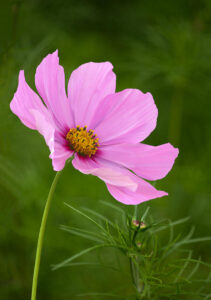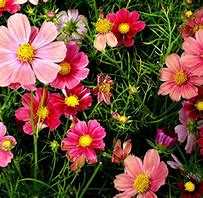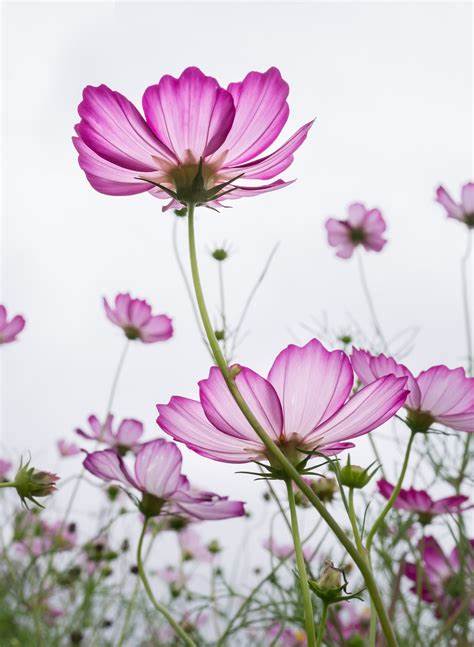Cosmos
by CMG Kathleen S.

Photo by Rosemary Calvert
“May your days be merry and bright” applies not only to “White Christmas” but also to the awesome days of early summer in Comal County. It’s that wonderful time when the humidity is at moderate levels and the garden centers are full of enticing choices for our gardens. Cosmos is a must have. Not only will this plant add bright colors of pink, white, orange, purple and red, it is also loved by butterflies, bees and birds. If the dead blooms are removed, Cosmos will be a prolific bloomer and a wonderful addition to a cut flower garden.
The plant is native to North, Central and South America extending as far as the Olympic Peninsula to the north and Paraguay to the South. It is a member of the Asteraceae family and various varieties are hardy in zones 2 to 11. There are 2 types of annuals and 1 type of perennial.
The perennial C. Astrosanguineus, the chocolate cosmos, is hardy to zone 7, has a burgundy color and smells like chocolate. It grows from a tuber similar to dahlias. The annuals are C. sulphureus with yellow to orange blooms, a height up to 6 ft. and C. bipinnatus with blooms of pink, red, orange and white and height is 1 to 4 ft. This species, C. bipinnatus, is recommended by the Austin AgriLife extension website for its’ outstanding brilliance.

Photo from wallpaperaccess.com
Cosmos is easily grown. While it prefers a neutral to slightly acidic soil, soil that is too rich will decrease the number of blooms. Soil must be well drained. Once established, Cosmos is fairly drought and heat tolerant. Fertilizer is not recommended. Taller varieties will need to be staked.
Aphids, flea beetles and thrips can be a concern. Treat with insecticidal soap. Diseases to watch for are powdery mildew, bacterial or fungal wilt and aster yellows disease, spread by leafhoppers and presents with yellow mottling on the leaves. Decrease the risk of these diseases by maintaining good spacing between plants and keeping plants in full sun.
Both annual Cosmos species are self-sowing if dead blooms are not removed. They can leave a weedy appearance in the garden. To control propagation deadhead the spent flowers. Annual Cosmos can start from seed indoors 4 to 6 weeks prior to the last known frost date. They can also be sown outside after risk of frost. Cover seeds with 1/4″ soil. Keep the soil moist. Germination is 7 to 21 days. The first blooms usually appear within 2 months. Cosmos can also be propagated by stem cuttings.
Sources: travis-tx.tamu.edu, homesandgardens.com, thespruce.com, almanac.com
